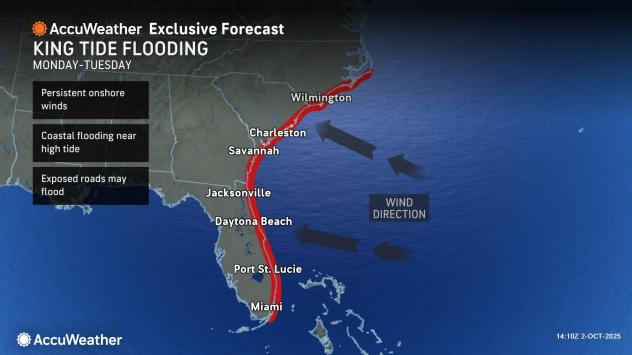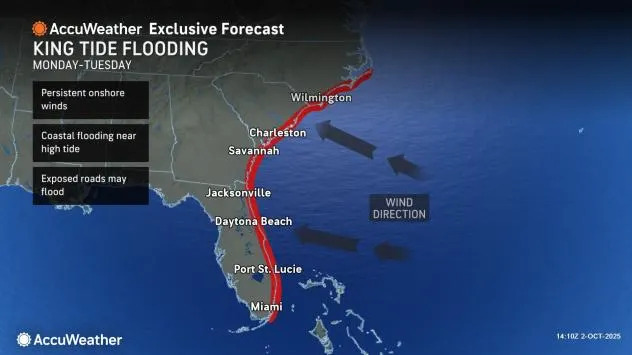
King tides are coming to the Southeast coast: Here’s what to know
A meteorological phenomenon known as ‘king tides’ is coming to east- and south-facing beaches along the Southeast coast early next week and will lead to disruptive coastal flooding, warn AccuWeather meteorologists.
The extra push of water ashore, occurring around high tides on Monday and Tuesday from Florida to North Carolina, will be assisted by our moon, despite the fact that it’s more than 220,000 miles away from Earth.
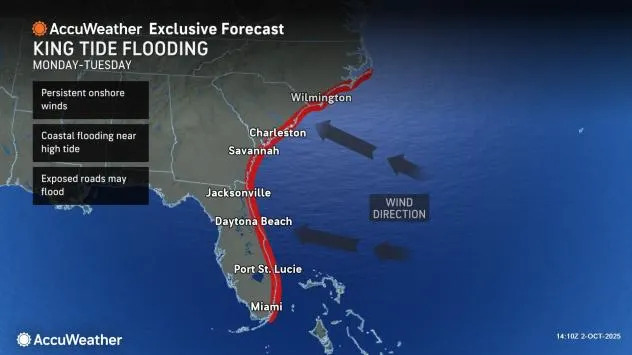
AccuWeather.com
“A full moon occurs on Monday, and tides are typically higher than average around that time as the Earth, sun and moon are all aligned,” explained AccuWeather Senior Meteorologist Dan Pydynowski. “This causes their gravitational pulls to combine and produce higher tides.” The moon will also be approaching perigee, the closest it is to Earth all year long, adding to that pull.
An added complication of a strong onshore flow will only help to worsen tidal flooding in the coming days.
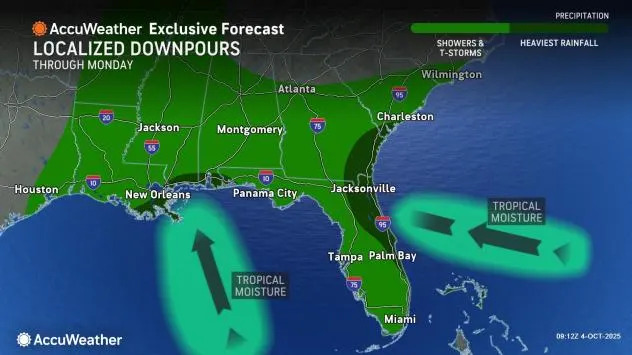
AccuWeather.com
“A large and nearly stationary area of high pressure off the Northeast coast will produce day after day of easterly flow this weekend into the first part of next week,” said AccuWeather Senior Meteorologist Dan Pydynowski. Lower pressure from a broad storm with tropical moisture in the Gulf and southwestern Atlantic will only add to the onshore flow.
While residents along the Southeast coast are no strangers to tidal flooding, even on perfectly sunny days, because of climate change-induced rising sea levels, king tides can push water up to an even higher level.
GET THE FREE ACCUWEATHER APP
• Have the app? Unlock AccuWeather Alerts™ with Premium+
Some of the more notorious spots for coastal flooding, including lower-lying beaches, cities and tidal basins such as those found in and near Charleston, South Carolina; Miami Beach, Florida; Myrtle Beach, South Carolina; and Savannah, Georgia; will especially be at risk for inundation early next week.
In Charleston Harbor, high tides typically reach a level of 6-7 feet above mean lower low water (MLLW). During king tides, that water level can reach as high as 7.5 or 8 feet above MLLW, which can lead to flooded roads in Downtown Charleston.
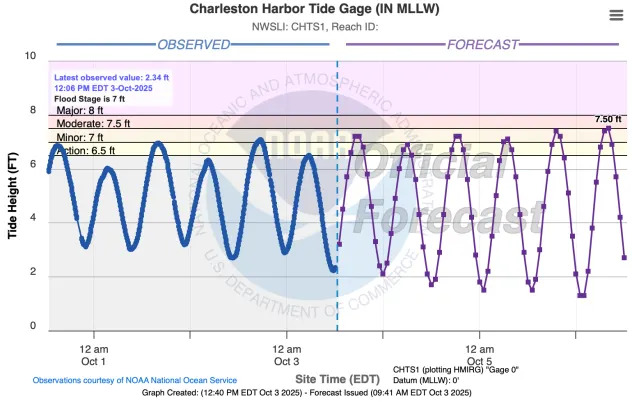
Tide forecast for Charleston Harbor, South Carolina, as of Friday afternoon, Oct. 3, 2025 (NOAA National Ocean Service).
“High tides occurring during the morning hours on Monday and Tuesday will be higher than those in the afternoon and evenings,” notes AccuWeather Climate Change Expert Brett Anderson.
Even ahead of the king tide threat early next week, coastal flood advisories were posted for more vulnerable coastlines this weekend from the east-central Florida Peninsula to North Carolina, due to the robust onshore flow and the building gravitational pull from the moon.
The threat was not limited to just the Atlantic coastline, but also for those farther inland along tidal rivers, bays and sounds, such as the Cape Fear River, Cooper River, Pamlico Sound, Savannah River and St. Johns River.

Flood waters reflect East Battery as a king tide rolls into the historic Battery causing flooding in Charleston, S.C. Sunday, Nov. 15, 2020. (AP Photo/Mic Smith)
When coastal flooding is forecast, locals often know what action to take, but sometimes visitors and tourists do not. Cars parked on roads vulnerable to flooding will need to be moved to higher ground around times of high tide. In addition, never drive around barricades and onto flooded roads.
In addition to water rising from the ocean and bodies of water, it will be falling from the sky. The easterly flow will come with frequent showers, some with torrential downpours.
“By the second half of the week, the king tides will continue,” points out Anderson. “However, onshore winds will weaken and even become slightly offshore in some areas, which will reduce the risk of coastal flooding.”
Want next-level safety, ad-free? Unlock advanced, hyperlocal severe weather alerts when you subscribe to Premium+ on the AccuWeather app. AccuWeather Alerts™ are prompted by our expert meteorologists who monitor and analyze dangerous weather risks 24/7 to keep you and your family safer.
